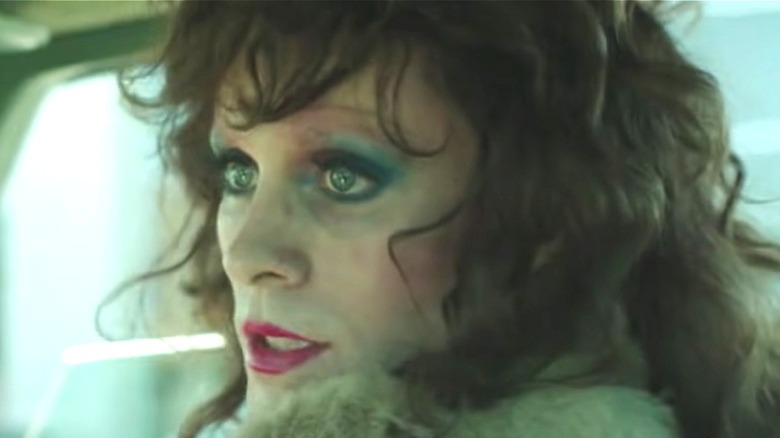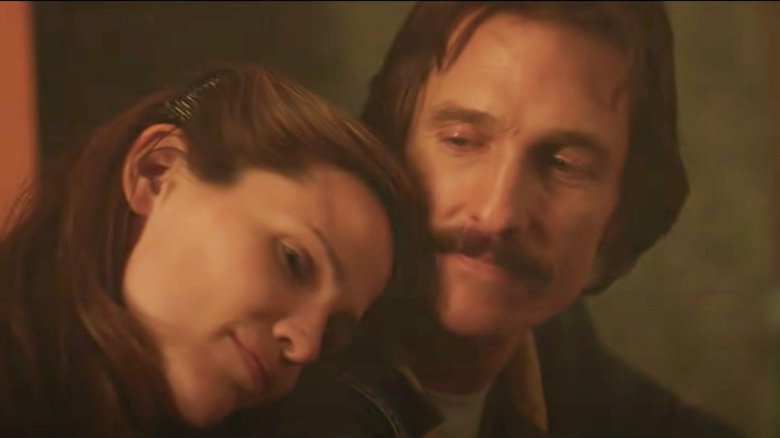Is Dallas Buyers Club Based On A True Story?
The Jean-Marc Vallée-directed film "Dallas Buyers Club" was an Oscar powerhouse in 2014, picking up six nominations and three awards. Matthew McConaughey and Jared Leto won for Best Lead and Supporting Actors and the film earned a Best Picture nomination. McConaughey stars as Ron Woodruff, a Dallas electrician who smuggles experimental drugs into the United States to distribute to people with AIDS, Leto plays a club member named Rayon, and Jennifer Garner is Woodruff's doctor, Eve Saks.
"Dallas Buyers Club" was a hit among audiences and critics alike, with both Rotten Tomatoes scores topping 90%. Mark Kermode of The Guardian called the film "something quietly remarkable" and the Sydney Morning Herald's Jake Wilson said McConaughey delivered the "performance of a lifetime." Ann Hornaday of The Washington Post lauded the star's "wellspring of deep compassion and fearlessness" and "blazing, all-in commitment that defines screen acting at its simplest and its best."
Even some of the film's key figures spoke glowingly of the performances. Leto said in a video released through the film's distributor, Focus Features, that Garner "did something incredible" and that her character "is the focus" by how she "keeps things grounded."
Vallée agreed, calling her portrayal "true, right, [and] nuanced." The phenomenal performances and the brilliantly written ending are key parts of what makes "Dallas Buyers Club" memorable, but just how much — if any — of this captivating and meticulously acted film is based on real-life events?
The film's story began as an article in the Dallas Morning News
In the summer of 1992, reporter Bill Minutaglio of the Dallas Morning News was chasing down stories about buyers' groups for people seeking AIDS treatment and landed an interview with one club leader working out of a downtown Dallas office — the real-life Ron Woodruff. Minutaglio told The Guardian that Woodruff "and others just wanted to live one more day, and they wanted the right to self-medicate with any damned thing they pleased."
Screenwriter Craig Borten saw the story in the newspaper's Sunday magazine and immersed himself in Woodruff's world for a few days. Borten later told the Los Angeles Times that his father had been in a situation similar to Woodruff's after a cancer diagnosis and "that's what spoke to my heart." It took 20 years for Borten to bring the film from paper to screen, and he kept it mostly aligned with the truth.
Woodruff really was an electrician who lost friends after his AIDS diagnosis, and the complexity of his operation and the numerous disguises he used were accurately represented — although he wasn't a rodeo cowboy but merely a fan (via Slate). Leto and Garner's characters are based on combinations of real-life individuals, and the relevant laws and government policies are represented accurately; all of which makes this beautifully crafted story even more powerful and moving.

